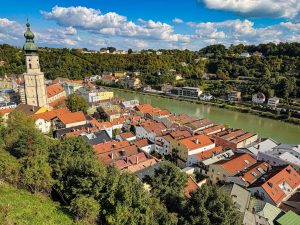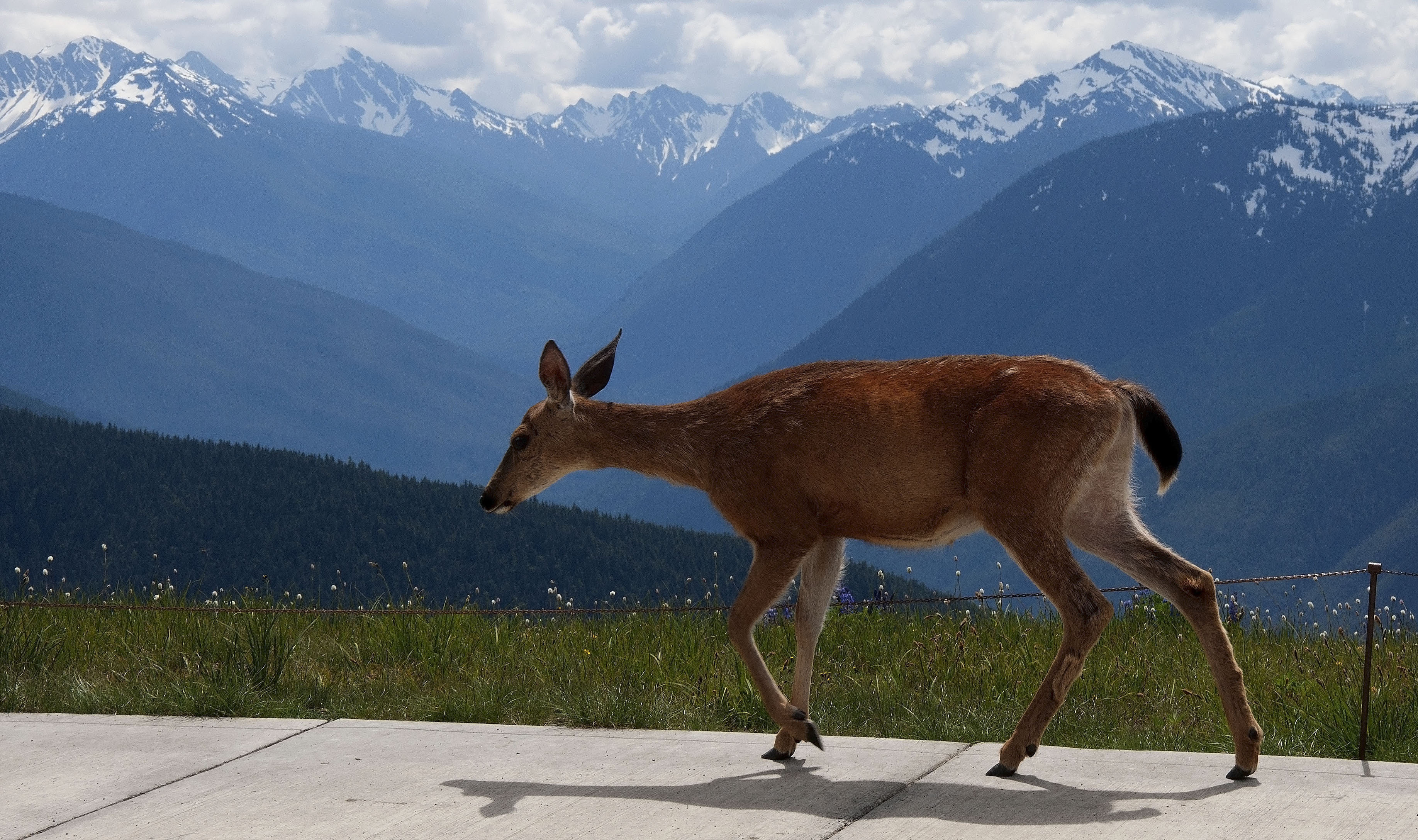The Longest Castle in the World
BURGHAUSEN, BAVARIA — Historians differ on when this lovely small city, built along the Salzach River that divides it from Austria, was actually founded. The oldest mention dates to 1025. Archaeologists have discovered artifacts dating back to the Bronze Age, approximately 5,000 years ago. The town predates the dawn of Christianity by centuries.
On a ridgeline, in the Upper Bavarian Alpine foothills above Burghausen, stands the longest castle in the world. It spans 1,051 meters (about 11.5 football fields). Daughter Mere and I visited the castle while son-in-law Matt worked in town. We first strolled around Wöhrsee Lake, which once served as a natural moat and is now a popular recreational area. Ducks floated along a lily pad-filled cove of the lake. The leaves were already turning here in early October. Eventually, we climbed a series of steps to the castle compound. (There are a lot of steps in Bavaria, wherever you go.)
Burghausen Castle  originated, according to the booklet I picked up at its entrance, as a Celtic fortification around 200 BCE. By 800 CE, it served as the fortified official court of the Agilolfingian dukes to protect the transport of salt — white gold — down the river. (A previous piece about touring a nearby salt mine can be found here.) The Agilolfingians ruled as Dukes of Bavaria from the 6th to the 8th century and were instrumental in bringing Christianity to the region.
originated, according to the booklet I picked up at its entrance, as a Celtic fortification around 200 BCE. By 800 CE, it served as the fortified official court of the Agilolfingian dukes to protect the transport of salt — white gold — down the river. (A previous piece about touring a nearby salt mine can be found here.) The Agilolfingians ruled as Dukes of Bavaria from the 6th to the 8th century and were instrumental in bringing Christianity to the region.
The castle underwent many expansions and contractions over the ensuing centuries. One of the Bavarian dukes and counts who used and expanded Burghausen Castle was Henry the Lion, a powerful 12th-century prince who founded Munich. In the 16th century, the last dukes of Lower Bavaria greatly expanded the castle: Henry the Rich, Ludwig the Rich and George the Rich. That is a passel of rich folks.
Napolean Bonaparte ordered all the outer fortifications torn down when he controlled the area. The castle was subsequently turned into museums, private residences, and shops. Besides serving as a tourist attraction, that is how Burghausen Castle is now used.
It would be cool to rent an apartment in a castle overlooking the Salzach River. Just saying.
Five courtyards lead up to the main castle. On this pleasant autumn afternoon, it made for a lovely stroll. The first courtyard outside the main castle once housed stables, a brewery, and a bakery for the royal residents. The next courtyard is lined with watchtowers to keep lookout for invaders. A pile of stone cannonballs was stacked in one corner, likely from the Middle Ages. The third outer courtyard is long and narrow, providing additional defensive zones. Those dukes were understandably wary of being attacked. The fourth outer courtyard is home to the Gothic chapel of St. Hedwig. It provides an excellent view of both Wöhrsee Lake and the Salzach River. Finally, the fifth courtyard holds the clock house and the Liebenwein Tower.
That is a cluster of courtyards.
Mere and I headed down to the town of Burghausen, home to about 20,000 people. The now-familiar red-tile roofs dominate the cityscape. We wandered through a well-p reserved Alstadt (old town), stopping to enjoy a beer while sitting outside. Outside the local library, the Stadtbibliothek, a statue of a wise owl — a common emblem for European libraries — stood guard on the wall over a shiny red, unlocked bicycle.
reserved Alstadt (old town), stopping to enjoy a beer while sitting outside. Outside the local library, the Stadtbibliothek, a statue of a wise owl — a common emblem for European libraries — stood guard on the wall over a shiny red, unlocked bicycle.
“You want to go to Austria?” Mere asked as we finished our beers. We headed to the river, crossed on a bridge that was being rebuilt, with just a narrow walkway left for pedestrians to cross into Austria. An improbable vending machine awaited us on the Austrian side, containing steaks, garlic bread, cake, eggs, milk, sausage, and cheese. These types of vending machines are common in small Bavarian towns, because grocery stores have limited hours. Plus, it is a handy way for farmers to sell their produce and meat.
As the sun began to sink, Matt joined us for dinner, at a restaurant along the Salzach River in Burghausen. My time in Bavaria was about to come to an end.
See more photos from Burghausen on my Facebook page.
Leave a reply
Fields marked with * are required











